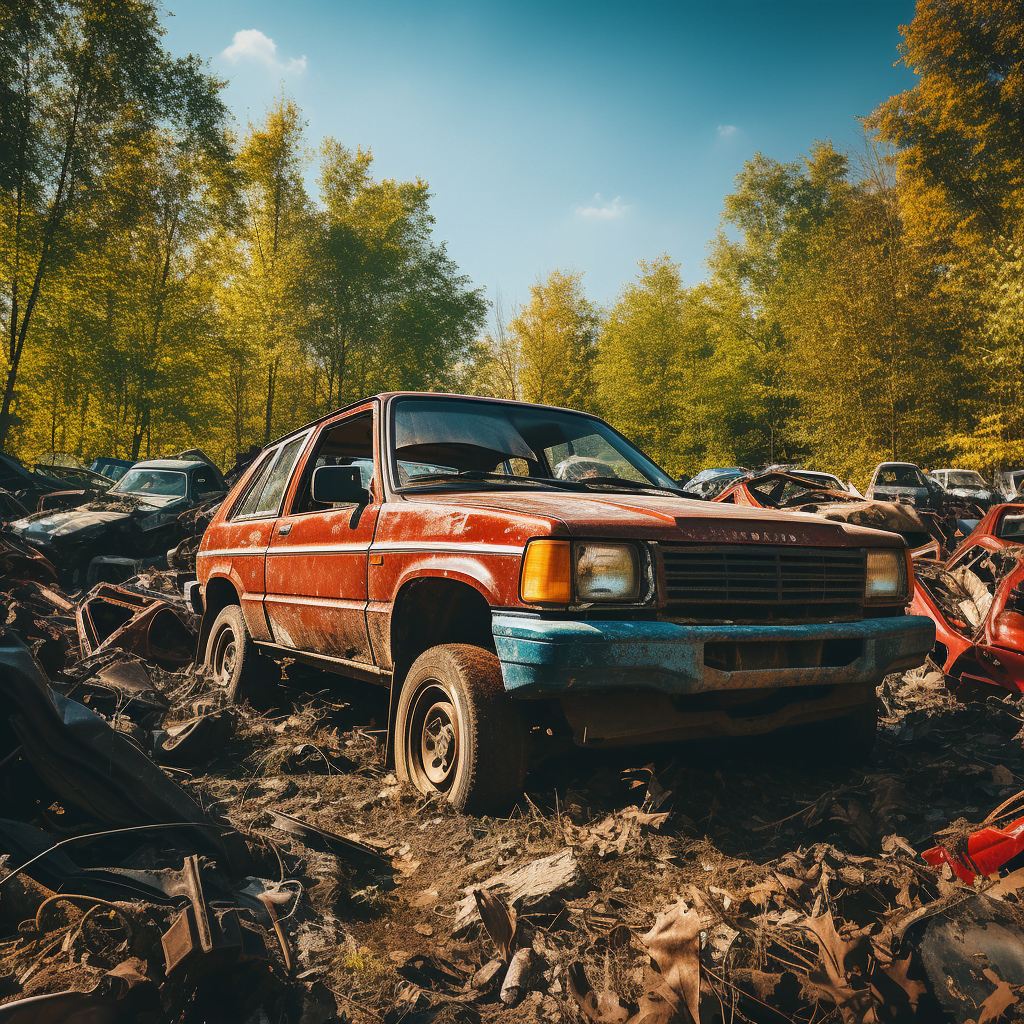Introduction
- Brief overview of car scrapping
- Importance of responsible vehicle disposal
The Pre-Scrapping Phase
- Determining the End of Life for Your Vehicle
- Factors contributing to a car reaching its end of life
- Benefits of scrapping over abandonment
- Preparation for Scrapping
- Removing personal belongings
- Canceling insurance and other administrative tasks
Understanding The Scrapping Process
- Initial Assessment and Depollution
- Inspection for reusable parts
- Draining of fluids and hazardous material removal
- Dismantling and Separation
- Removal of recyclable parts
- Separation of materials
- Shredding and Crushing
- The crushing process
- Shredding and further material separation
- Metal Recovery and Recycling
- Metal sorting and recovery
- The recycling process
Environmental Implications
- Benefits of recycling
- The impact of irresponsible disposal
Financial Aspects of Car Scrapping
- Valuation of Scrap Cars
- Factors affecting the valuation
- Ways to maximize the value
- Costs Involved in Scrapping
- Towing and transportation
- Administrative costs
Legal Considerations
- Necessary documentation
- Compliance with local laws and regulations
Conclusion
- Recapitulation of key points
- Encouragement for responsible vehicle disposal
Introduction
Car scrapping is a crucial part of the automotive lifecycle, ensuring that vehicles at the end of their usable life are disposed of responsibly. This process not only helps in managing waste but also contributes to the recovery of valuable materials. Understanding the intricacies of car scrapping is essential for vehicle owners, especially when it comes to making informed decisions regarding the disposal of their aging or damaged vehicles.
The Pre-Scrapping Phase
Determining the End of Life for Your Vehicle
A car reaches its end of life due to several factors such as age, mechanical issues, or severe damage from accidents. The decision to scrap is often driven by the escalating cost of repairs compared to the vehicle’s value. Besides, scrapping offers a more environmentally friendly solution compared to abandonment, which can lead to hazardous fluid leaks and other environmental issues.
Preparation for Scrapping
Before taking your car to a scrapping facility, it’s crucial to remove all personal belongings and any aftermarket additions. Additionally, you need to cancel the insurance and return the license plates, if necessary. It’s advisable to inform the local transportation authority about your intention to scrap the car, fulfilling all the legal requirements in your jurisdiction.
Understanding The Scrapping Process
Initial Assessment and Depollution
Once at the scrapping facility, professionals will conduct an initial assessment to identify reusable parts. Following this, the depollution process begins, which involves draining all the hazardous fluids like oil, coolant, and fuel, and safely disposing or recycling them.
Dismantling and Separation
Post-depollution, the dismantling process commences. Reusable parts such as engines, transmissions, and electronic components are removed and segregated. Following this, different materials like metals, plastics, and rubber are separated for recycling.
Shredding and Crushing
The remaining shell of the car is then crushed and shredded into smaller pieces. This process facilitates easier sorting and recycling of various materials.
Metal Recovery and Recycling
The shredded materials are sorted, and metals are separated from other materials. These metals are then sent to recycling facilities where they are melted and repurposed for the manufacture of new products, including new vehicles.
Environmental Implications
Recycling materials from scrapped cars significantly reduces the demand for new materials, which in turn lowers the environmental impact. Irresponsible disposal, on the other hand, can lead to soil and water contamination due to hazardous fluids and materials.
Financial Aspects of Car Scrapping
Valuation of Scrap Cars
The value of a scrap car primarily depends on the weight of recoverable metals and the condition of reusable parts. Some scrapping facilities also consider the make and model of the car. To maximize the value, it’s advisable to have a clear understanding of your car’s worth in the scrapping market.
Costs Involved in Scrapping
There could be costs involved in transporting your car to the scrapping facility. Additionally, some administrative costs may be incurred for paperwork and other legal compliances.
Legal Considerations
Ensure you have all the necessary documentation like the title of the car and identification documents. Compliance with local laws and regulations is crucial to avoid any legal issues during the scrapping process.
Conclusion
Car scrapping is a responsible way to dispose of your old or damaged vehicle. Understanding the process, environmental implications, and legal requirements will make the journey smoother and more beneficial both for you and the environment.
